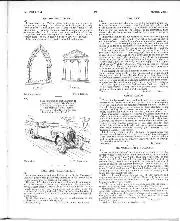
Letters From Readers (contd), September 1964
GOTHIC OR CLASSIC? Sir, I sometimes read MOTOR SPORT with a certain amount of amusement, especially the references to R.-R.—you do really seem to have "a flea in the car,"…
The chairman of Bonhams not only auctions cars, but races them too. He’s a firm believer that the track is the right environment for historic racing cars
Words: Simon Taylor. Photography: James Mitchell
Watch Robert Brooks auction a fine motor car and you are caught up in an act of pure theatre. From the rostrum his lofty gaze sweeps the room, drawing the entire audience into the excitement and gravity of the moment as he extols the provenance and glamour of the lot. The bids accelerate, the tension rises, a hush falls as the lesser punters drop out and the floor is left to a couple of serious bidders. Robert’s tall, urbane figure leans down, gavel concealed within right fist, and smiles encouragingly, charming the bids ever upwards, until finally the loser lowers his eyes and shakes his head in disappointment and perhaps relief. With a sharp snap the gavel falls, and another lovely toy has snared a new owner.
Robert is chairman of Bonhams, which has been in the auction trade since 1793. Its business around the world is in fine art, antique furniture, and collectibles from first editions to ceramics, from jewellery to rock ‘n roll memorabilia. Only 20 per cent of its £250 million annual sales concerns cars. But Robert is a passionate enthusiast, a competitive racer who only joined Christies as a teenage part-timer to pay off Formula Ford debts. That was in 1975. He went on to build up Christies’ record-breaking old car department: in 1986 he sold the Albert Hall Bugatti Royale for £5.5 million, and his 1989 Monaco sale totalled £20 million, still a European record.
Then he set up on his own as Brooks, backed by long-time friend and eminent Dutch collector Evert Louwman, and concentrating on motor cars. Always one to aim high, he started talking to Bonhams about a takeover the same year, even before he’d started to show a profit. The deal took 10 years to do. After a brief period as Bonhams & Brooks, the business became Bonhams once more, with Robert at the helm.
We lunch at Teca, a quietly stylish Italian restaurant behind Claridges, two minutes from Bonhams’ Bond Street HQ. Robert chooses salmon carpaccio and sea bream, and a small glass of pinot bianco — he has an afternoon board meeting. His views about investing in old cars are uncompromising and honest.
“In pure money terms, cars are not a good investment — no art is. I find treating cars just as currency incredibly distasteful, and also baloney. If you get into cars purely for value growth, as misguided people did in 1989, things are bound to go mad — which will inevitably be followed by a readjustment. You have to buy for enjoyment, and no other reason.”
What historic cars are still good value? “Single-seaters provide the purest form of racing, but a top single-seater will always be cheaper than a top sports-racer. If a car is shown to be competitive, of course the price goes up. A few of us started racing Lotus 15s in the 1990s when they were worth about £70,000. As we moved up the grids, prices started to climb, and now Evert has turned down £200,000 for his. But you can still buy a Lotus Eleven for £50,000, budget £1000 a race, and have some wonderful sport — and get your money back when you sell it, if it’s still in one piece.”
Robert has raced touring cars and GTs, but it’s his exploits in historic racing, in a variety of cars, that have raised his profile. “You have to take part in it all to understand everything that’s going on — otherwise your judgement of the constantly shifting market might be one lap behind. My favourite racing car has to be P578/1, Graham Hill’s 1962 World Championship BRM. It’s changed hands four times in its life, and three times I’ve handled the sale. I’ve also raced it for one of its owners. I raced a Maserati 250F for a couple of seasons, and all you’ve heard about how forgiving 250Fs are is true. The most terrifying was the Maserati 8CM. Its wheels spinning just under my elbows in any gear gave me renewed respect for Nuvolari!
“Max Mosley may think historic racers are a bunch of safe old men, but there are one or two hard drivers out there. For my money the most underrated is Rob Hall — blindingly quick, and sympathetic with the machinery. As for Max’s view that valuable cars should only be demonstrated, he’s missed the point. Most of the owners just won’t be interested. They own the cars to race them — even if they’re well down the field, they’re getting the feel of the car in anger. They won’t bring their cars out to trundle around in a parade. They won’t even want to own them any more.”
And what about future values? “I can see speculation starting to wander back in. The market is now doing a lot of things it did in the late 1980s. There’s plenty of loose cash in the world at the moment. Of course if the world economy moves down, it will bring the car market with it. But I think we’re going to see some fireworks in the next 24 to 36 months.”
Through those fireworks, Robert Brooks’s gavel will continue to thump down. As always, the theatricals will be worth watching.